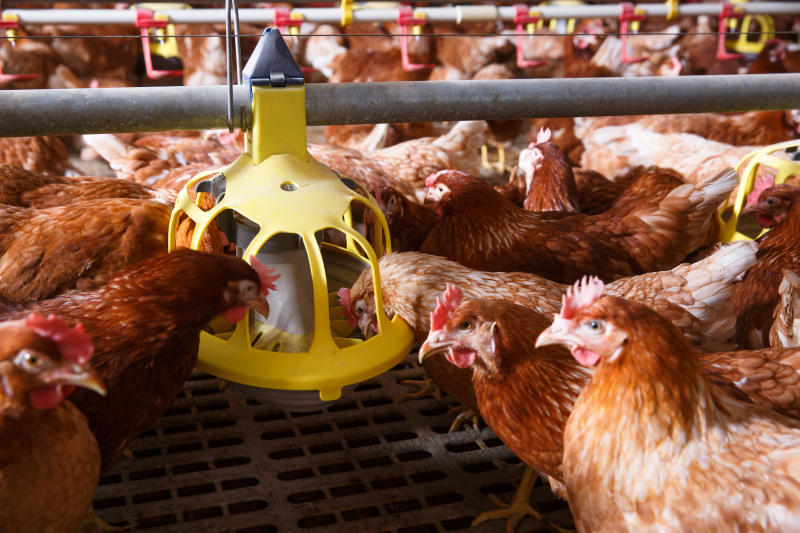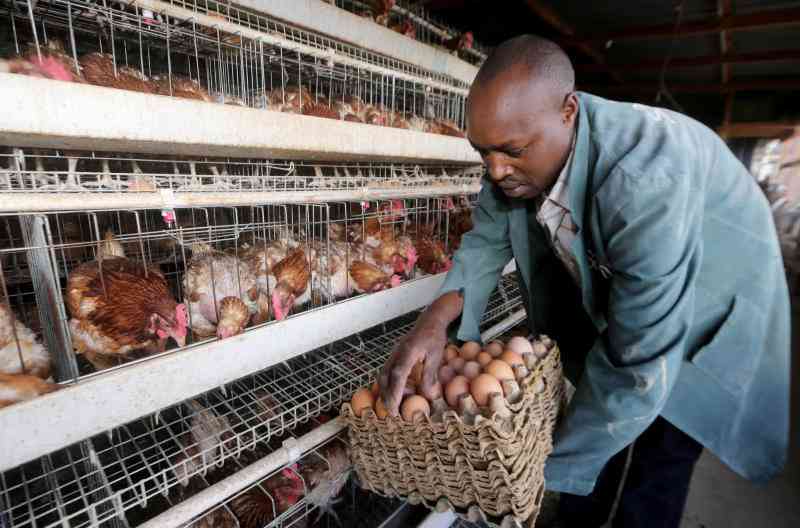
Dear Dr Messo
I am a poultry farmer with many years of experience and keeping multiple age layer flocks at different stages of production. I have noticed a gradual drop in egg production and wasting of birds despite feeding them to breed standards. I have consulted different agrovets and all they do is prescribe different antibiotics that have not helped. Egg production has dropped from 92 to 72 per cent over two months. I have changed feed suppliers four times, yet the problem won’t go away. What is happening? Please assist.
Harrison Mwangi
When Harrison reached out to Smart Harvest with these concerns, we visited his farm in Rongai in the city’s outskirts. A few things stood out:
1. The eggs were small in size and with weak fragile shells.
2. The birds had lost weight, weighing less than 1.3kg and showing a thin sharp keel bone as sharp as a blade.
3. Pale comb and wattles with some completely shrunken, probably due to anemia and diarrhoea. Most of these types of birds were showing no signs of egg laying.
4. Some birds had dirty vent feathers while others had their vents pecked by other birds.
5. Some birds had little or no appetite and appeared ill thrift and listless.
6. Fecal droppings appeared watery and foamy.
7. There were a few dead birds.
I culled some birds and did post mortem on all them. I was not surprised at all when I opened the upper intestinal loop of duodenum and exposed large adult ascarid worms with some measuring 12cm long in 90 per of all the dead and culled birds. The intestinal lining was disrupted, and a lot of undigested feed in the lower gut. This finding explained occurrence of pale combs due to anemia because of blood loss. This could also explain the pecking habits in some birds as fellow birds go for the bloody tainted vents shedding adult worms in the litter.
Infection is through direct ingestion of adult worms or ingestion of eggs or larval stages of the worms from the litter or manure. The worms or their eggs are normally introduced into the poultry shed by contaminated foot wear, clothing, feed bags, equipment, wild bird droppings. They can also be in the farm if you have free range birds kept in the farm yard.
Most common worms in poultry
1. Round worms (Ascarids) the most common, white worms and can measure up to 12 cm long.
2. Hair worms, these are small and not noticeable by naked eyes, affecting the air ways.
3. Cecal worms
4. Gizzard worms and
5. Gape worms.
Treatment
Treatment and control involve use of Levamisole 7.5 per cent in drinking water under supervision of a registered veterinarian for two days every 3-4 weeks in severely infected flock and at intervals of two months in a healthy flock to avoid heavy buildup of infestation. Please note during de-worming, egg production is likely to temporarily drop due to poor water intake.
Prevention
1. Ensure you concrete your poultry shed, do a thorough cleaning and disinfection using effective QAC+ Glutaraldehyde disinfectant avaiylable in a poultry centre agrovet near you.
2. Keep the litter in your barns always dry, manage any water leaks and avoid water spillage. Use the correct waterers for your age of birds.
3. Ensure the feeders do not spill feed on the floor, avoid floor feeding at all.
[The writer is the company veterinarian at Kenchic, [email protected] or [email protected]]
Want to get latest farming tips and videos?
Join Us
 The Standard Group Plc is a multi-media organization
with investments in media platforms spanning newspaper print operations,
television, radio broadcasting, digital and online services. The Standard Group
is recognized as a leading multi-media house in Kenya with a key influence in
matters of national and international interest.
The Standard Group Plc is a multi-media organization
with investments in media platforms spanning newspaper print operations,
television, radio broadcasting, digital and online services. The Standard Group
is recognized as a leading multi-media house in Kenya with a key influence in
matters of national and international interest.
 The Standard Group Plc is a multi-media organization
with investments in media platforms spanning newspaper print operations,
television, radio broadcasting, digital and online services. The Standard Group
is recognized as a leading multi-media house in Kenya with a key influence in
matters of national and international interest.
The Standard Group Plc is a multi-media organization
with investments in media platforms spanning newspaper print operations,
television, radio broadcasting, digital and online services. The Standard Group
is recognized as a leading multi-media house in Kenya with a key influence in
matters of national and international interest.








